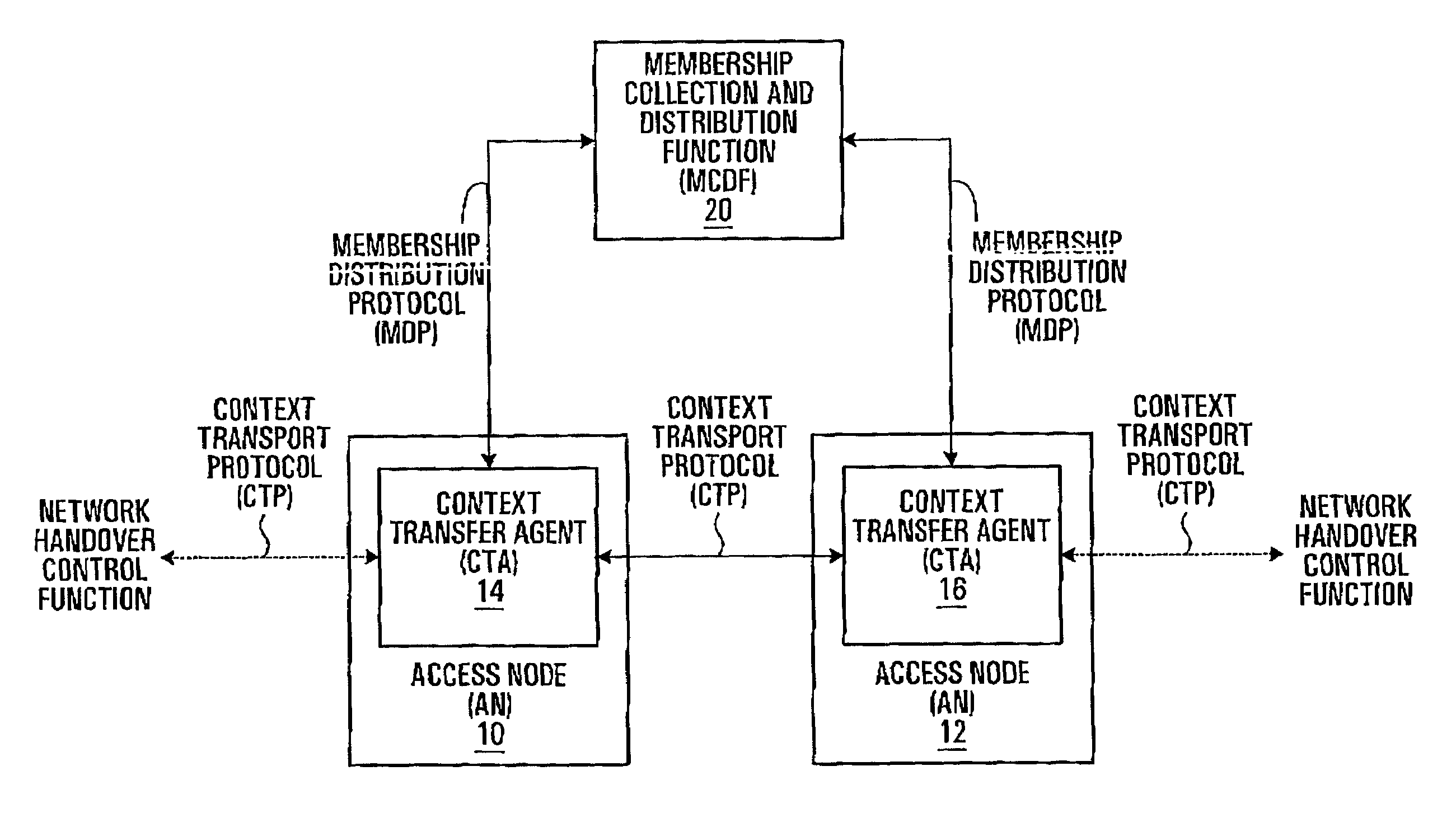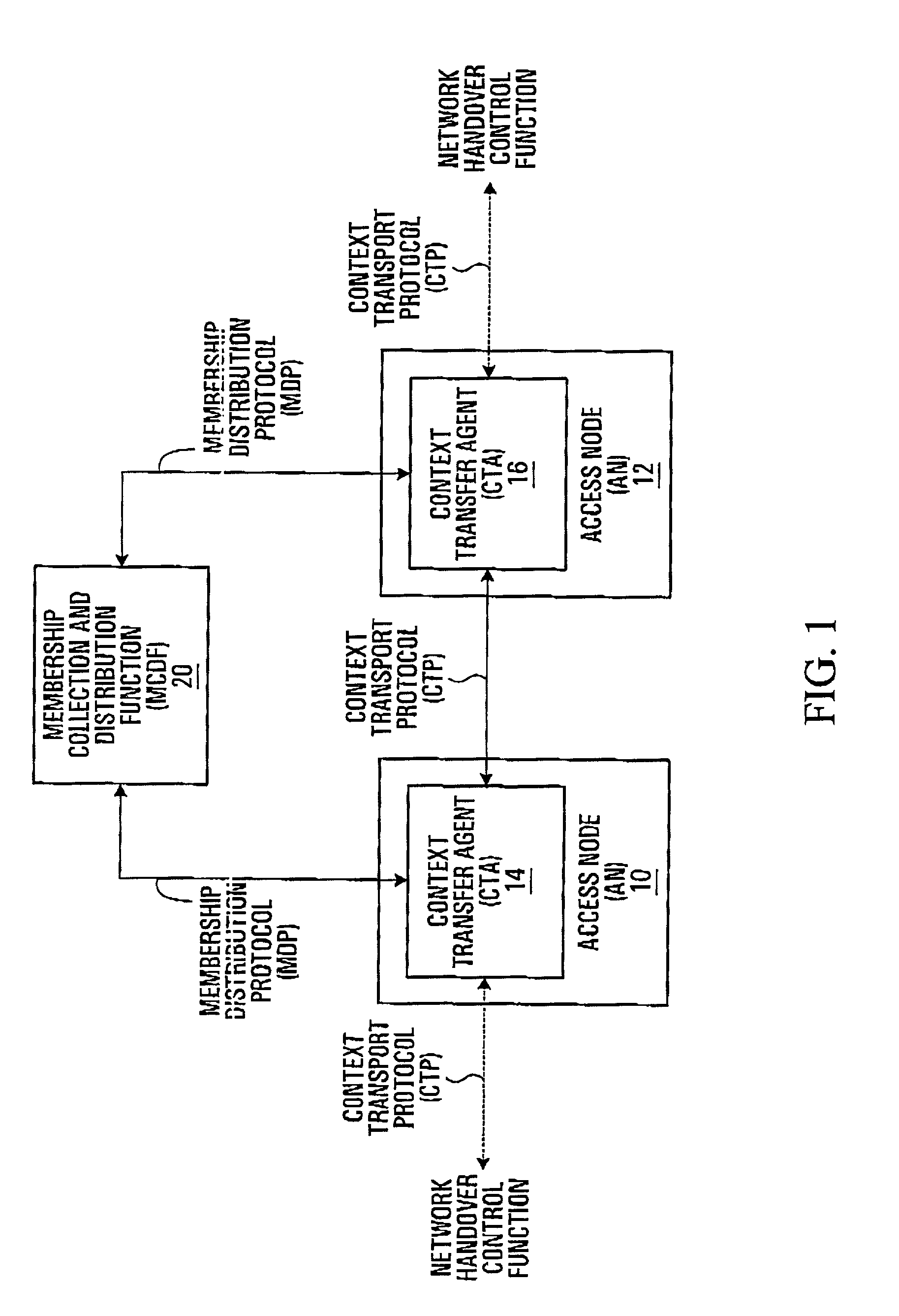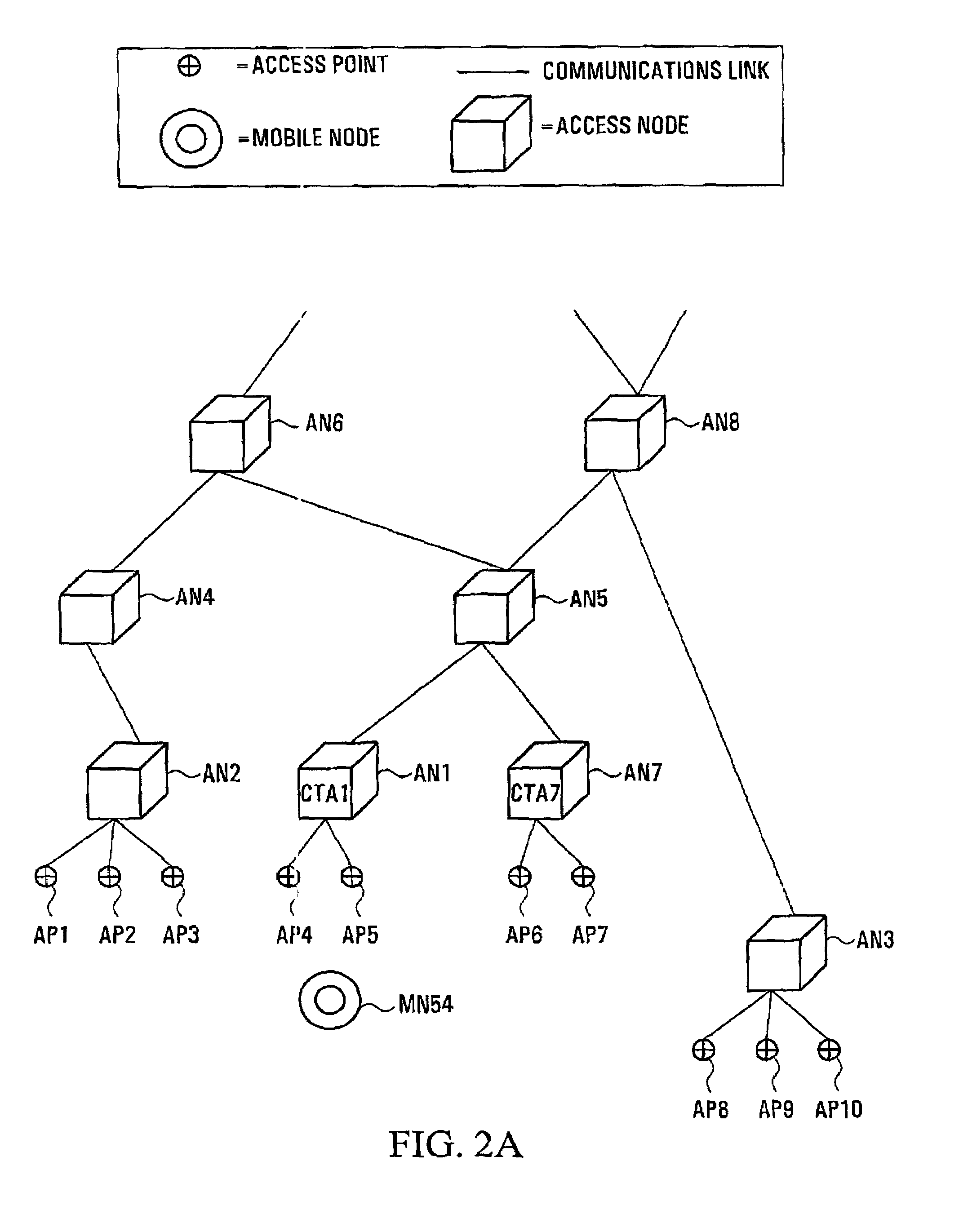Context transfer systems and methods in support of mobility
- Summary
- Abstract
- Description
- Claims
- Application Information
AI Technical Summary
Benefits of technology
Problems solved by technology
Method used
Image
Examples
Embodiment Construction
[0030]Embodiments of the invention provide context transfer mechanisms that hell) to enable seamless handover of a mobile node's active sessions by transferring the “context” information needed to support the microflows associated with each active session. Context transfers reduce the effect of handovers on real-time applications by minimizing the time needed to re-establish a level of service equivalent to that provided to the mobile node's traffic by previous nodes.
[0031]A fundamental unit of IP service is the microflow. IP microflows may be bundled, or aggregated, for a variety of reasons. As examples, the IETF Differentiated Services are typically provided to aggregates of IP microflows, and authentication is typically associated with all the IP microflows having the same source address. In general, however, the smallest component of traffic sent to and from a given mobile node that may be considered to have distinct context is an IP microflow.
[0032]IETF RFC 2475[4] (see www.ier...
PUM
 Login to View More
Login to View More Abstract
Description
Claims
Application Information
 Login to View More
Login to View More - R&D
- Intellectual Property
- Life Sciences
- Materials
- Tech Scout
- Unparalleled Data Quality
- Higher Quality Content
- 60% Fewer Hallucinations
Browse by: Latest US Patents, China's latest patents, Technical Efficacy Thesaurus, Application Domain, Technology Topic, Popular Technical Reports.
© 2025 PatSnap. All rights reserved.Legal|Privacy policy|Modern Slavery Act Transparency Statement|Sitemap|About US| Contact US: help@patsnap.com



